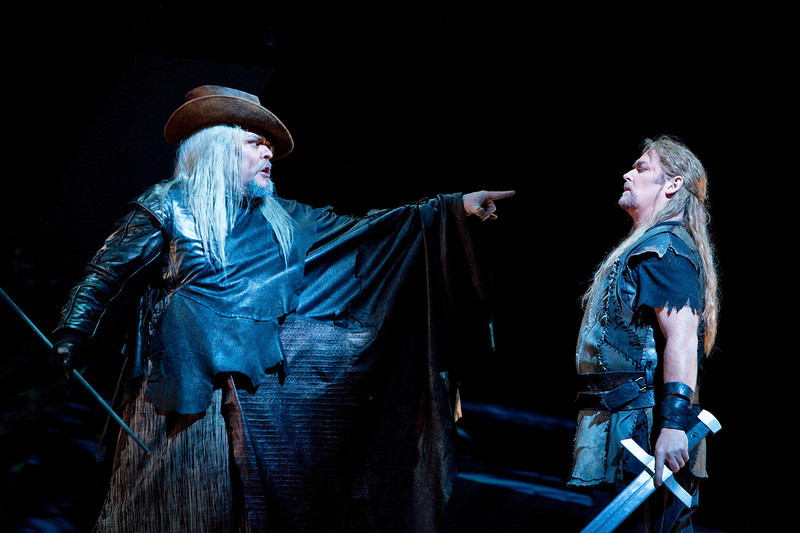
#WednesdayWagner "Willkommen, Gast, in Gibichs Haus! Seine Tochter reicht dir den Trank!" Welcome to another weekly dose of Wagner. After the Brünnhilde and Siegfried comparison, let's move today to another Siegfried's love story: SIEGFRIED AND GUTRUNE
#TwitterCultural
#TwitterCultural
#WednesdayWagner The starting point, in this case, is Siegfried's Horn Call, which appears in Act 2, and which is the basis of some interesting and beautiful developments during Siegfried and Götterdämmerung
#TwitterCultural
#TwitterCultural

#WednesdayWagner This motive is formed by an initial arpeggio, starting with an ascending 5th that moves then in the opposite direction. After that, there is almost an ascending scale (with some ornament at the end) to reach again the highest pitch of the chord
#TwitterCultural
#TwitterCultural

#WednesdayWagner For those who want to enjoy this fragment, here you can find the superb performance of Will Sanders at Bayreuth. Simply astonishing, especially the ppp sounds at 1.19!!!
#TwitterCultural
#TwitterCultural
#WednesdayWagner Let's move to the first appearance of Gutrune, in Götterdämmerung Act 1 ... The music that appears then can be listened to at 0.55 below:
#TwitterCultural
#TwitterCultural
#WednesdayWagner Looking at the score, we can see ... Yes, an initial arpeggio first ascending and then descending, and an ascending scale reaching the 5th of a F major chord. The same configuration than in Siegfried's Horn Call!!!
#TwitterCultural
#TwitterCultural

#WednesdayWagner When we move forward in the score, Gutrune's leitmotif is also transformed to incorporate the love between her and Siegfried. You can listen to it at 1.47 below
#TwitterCultural
#TwitterCultural
#WednesdayWagner Looking at the score, we can see at the beginning a kind of "inversion" of Siegfried's call, including the 5th movement. Two motives are put together, ending with an ascending scale. And the voice is singing almost the ending of Siegfried's call!
#TwitterCultural
#TwitterCultural

#WednesdayWagner The resemblance between Siegfried's Horn Call and Gutrune is even clearer when Gutrune's love leitmotif is compacted in what is called "Gibichungs leitmotif"
#TwitterCultural
#TwitterCultural

#WednesdayWagner Comparing this Gibichung's leitmotif with Siegfried's Horn Call, we can see that one is the inversion of the other, with a slight modification to make them major chords. But the important pitches and the movements are related to each other!
#TwitterCultural
#TwitterCultural

#WednesdayWagner Indeed, Wagner himself let us hear both motives one after the other right at the beginning of Götterdämmerung Act 3. Note that Hagen/Alberich minor 2nd also appears, which means that everything is related to evil things that will happen
#WednesdayWagner Additionally, after Siegfried's death, Gutrune has a long monologue that is interrupted by different horn calls. Listen to the one at 8.55 ... It's again the Gibichungs' leitmotiv, which is the inversion of Siegfried's Horn Call!
#WednesdayWagner So Gutrune's love seems to be the reverse of Siegfried, musically represented by the inversion of his leitmotive, and also this love will carry Siegfried to his terrible ending. Everything connected, everything different, that's one the cores of music
@threadreaderapp unroll
• • •
Missing some Tweet in this thread? You can try to
force a refresh





